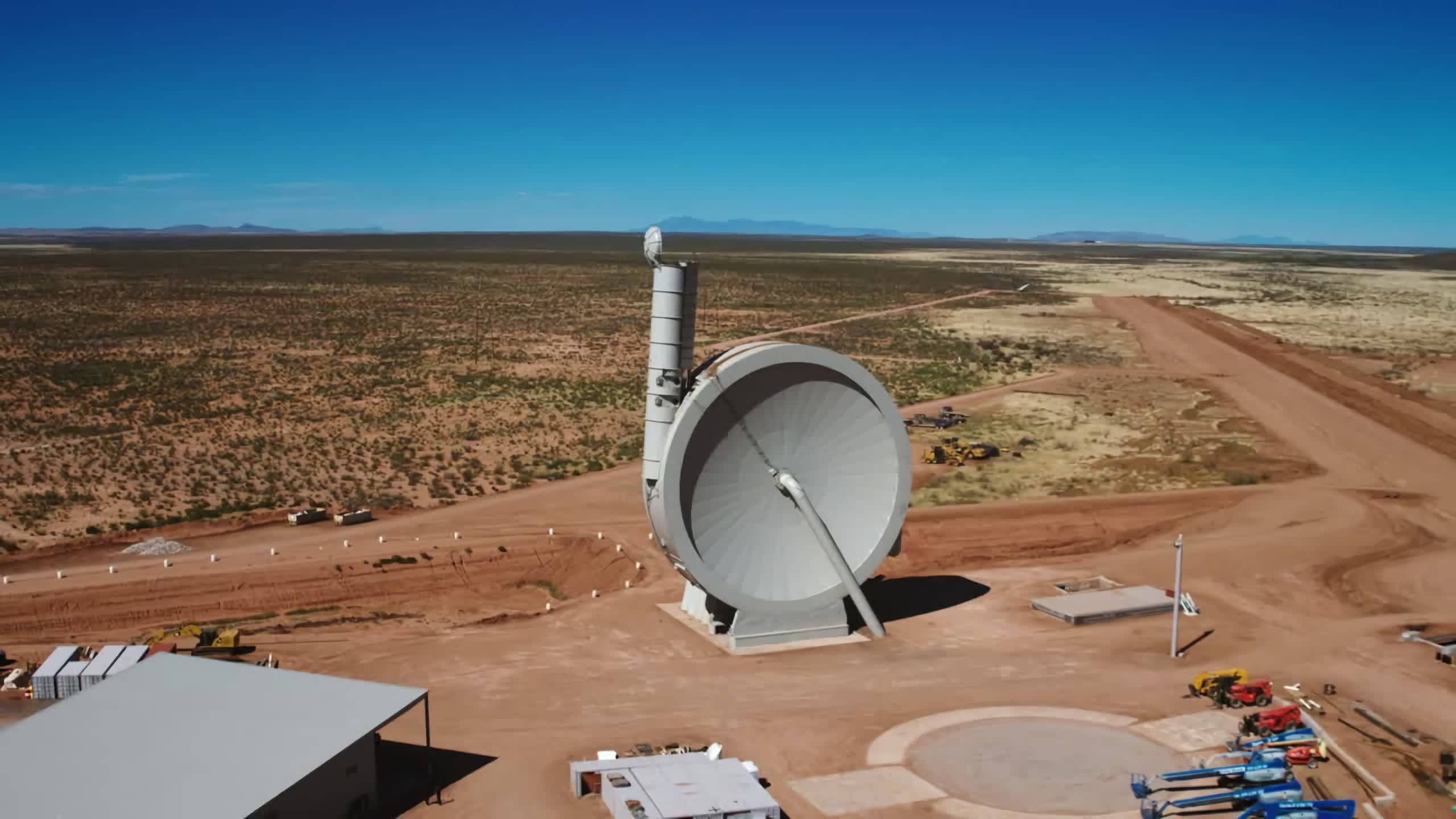The big picture: Getting satellites into orbit is expensive. Each launch consumes tons of fuel, and missions can only occur once every few months. A company called SpinLaunch wants to eventually be able to launch multiple satellites per day, primarily using kinetic energy produced by a colossal centrifuge.
Last year, a space startup called SpinLaunch completed work on a prototype centrifuge in New Mexico capable of spinning an object at up to 10,000 Gs and launching it into the air. The company's stated purpose was to eventually build an enormous kinetic cannon that could launch satellites into space.
Since October, SpinLaunch has performed eight test flights. It equipped the latest with a camera, providing the first look (above) at what it would be like to get shot tens of thousands of meters into the air from the prototype model (below). As expected, it would be a vomit-inducing trip.

Like a football or a bullet, the most efficient and stable method to travel through air is using a spiral. The launcher's projectiles are shaped like large bullets or small three-meter-long missiles. The fins on the payload are angled to produce this spin.
The "optical payload" left the cannon — the A-33 Suborbital Mass Accelerator — at 1,600km/h (nearly 1,000mph). The entire trip lasted for 82 seconds, with the projectile reaching over 7,620 meters (25,000 feet). Interestingly, the launch only used a small fraction of the A-33's power.
The optical payload test gave engineers the first look from the projectile's point of view, which is exciting. More importantly, the test shows that electronics can survive the tremendous G-forces and launch from the barrel — a problem the company had been concerned about since the conceptual stage. So the camera also served as a proof of concept.

SpinLaunch's full-scale L100 Orbital Mass Accelerator will be three times bigger than A-33. It will be capable of flinging a 200 kg (441 lb) satellite at 8,000 km/h (5,000 mph) to near-orbital altitudes before rocket engines engage to complete the flight and stabilize the satellite's orbit.
In April, NASA contracted SpinLaunch to perform a suborbital launch and recovery of specially developed test equipment. The test flight is slated for later this year. If all goes well, NASA will consider other possible tests with an eventual orbital launch after the L100 is operational.
SpinLaunch has not officially announced where it is building the L100, saying only that "the first Orbital Launch Site is in final selection in a soon-to-be-disclosed location in a coastal region of the United States." However, a conceptual image (above) has a file name containing "Alaska_Orbital_Wide." Presumably, Alaska is at least a candidate location.
Construction should complete in the next couple of years since the startup plans to start commercial launches in 2025. In the meantime, engineers will use the suborbital prototype to run one or two tests per month at gradually faster speeds and with varying payloads.
https://www.techspot.com/news/94466-here-what-looks-like-get-flung-centrifuge-1000.html